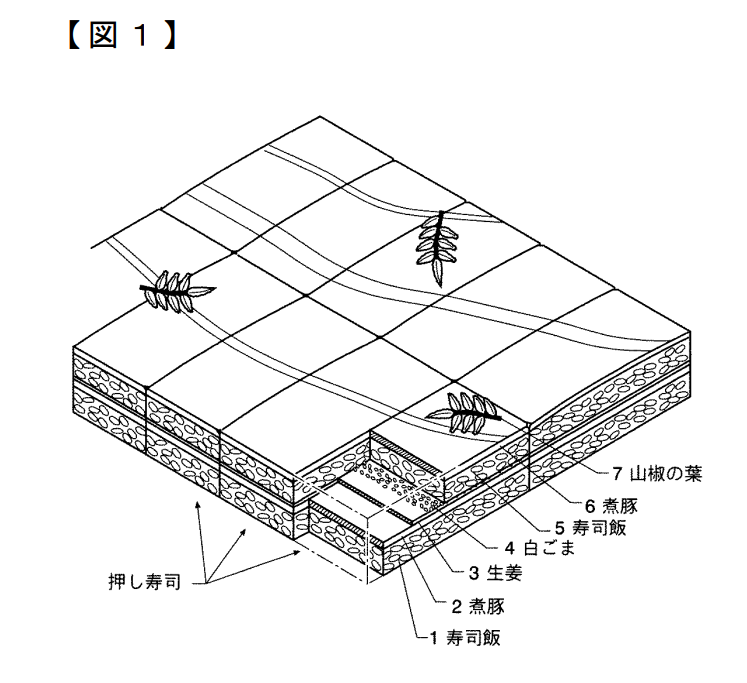
- Introduction: Why Layered Pressed Sushi Requires Structural Design
- What the Pressed Sushi Structure Contains
- How the Layered Sushi Compression Mechanism Works
- Why This Structured Approach Improves Food Quality
- Engineering Challenges in Food Compression
- Patent Attorney’s Thoughts
- Application of the Technology: “Layer-Stabilized Food Compression Platform”
- Final Reflections
Introduction: Why Layered Pressed Sushi Requires Structural Design
Pressed sushi (oshizushi) may look simple, but its layered form demands careful structure.
This patent drawing reveals a multi-layer pressed sushi architecture,
designed to stabilize ingredients, preserve visual presentation, and maintain texture even under compression.
It turns a traditional food into a precise engineering subject.
What the Pressed Sushi Structure Contains
The patent illustration depicts:
- A compressed rice base
- Mid-layer fillings arranged evenly
- Upper rice or topping layer
- A mold or enclosure guiding uniform pressure
- A slicing guide for consistent portioning
This design ensures each layer maintains shape and visual clarity.
How the Layered Sushi Compression Mechanism Works
The key mechanism involves applying pressure through a controlled mold:
- Ingredients are layered in order
- Pressure is applied from the top and sides
- The mold compresses horizontally and vertically
- Layer thickness becomes uniform
- When removed, the block retains its structure
This prevents collapse or ingredient displacement during slicing.
Why This Structured Approach Improves Food Quality
- Layers stay visually distinct
- Ingredients do not slide or leak
- Texture remains firm but not dense
- Presentation becomes more consistent
- Easier to package and transport
This structure enhances both culinary quality and commercial viability.
Engineering Challenges in Food Compression
Although food-related, the design still faces mechanical challenges:
- Ensuring even pressure across irregular fillings
- Avoiding ingredient deformation
- Keeping moisture balance intact
- Creating slice-friendly density
- Designing molds that are hygienic and easy to clean
It is culinary engineering disguised as cuisine.
Patent Attorney’s Thoughts
This invention beautifully blends cooking with mechanical intuition.
By treating sushi as a structured object rather than a loose assembly of flavors,
the design respects both the artistry of traditional cuisine and the precision required in modern food preparation.
Pressed sushi becomes more than a dish—it becomes a constructed landscape of textures, colors, and balance.
In this patent, I see a quiet dialogue between tradition and technology, held together by thoughtful pressure.
Application of the Technology: “Layer-Stabilized Food Compression Platform”
Purpose
To create layered foods—such as sushi, desserts, or plant-based protein blocks—that maintain visual and structural integrity through controlled compression.
System Components
- Multi-directional compression mold
- Layer alignment frame
- Moisture control surface
- Guiding rails for clean slicing
- Modular block-forming attachments
Operational Flow
- Ingredients are placed in the mold in desired layers.
- Compression is applied evenly from top and sides.
- Moisture adjusts naturally through the pressure surface.
- The block is removed and transferred to slicing guides.
- Portions are cut with minimal layer disturbance.
Final Reflections
This pressed sushi structure shows how engineering principles can elevate culinary presentation.
By stabilizing layers through intelligent compression, the design preserves beauty, texture, and tradition in every slice.
Disclaimer: This content is an AI-generated reinterpretation based on a patent drawing.
It is provided for educational and cultural purposes only, and not as legal advice.
↓Related drawing↓




